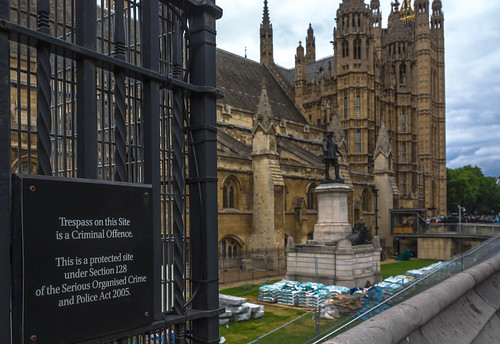
Yesterday, I could hear the budget speech coming through on a distant radio. It was the braying and hee-hawing sounds that gave it away. Parliament in action.
Curious that just a few weeks before the next election we get something like this, with all its political loops. Although, come to think of it, the opposition response was rather basic, resorting to "don't believe it" type phrases.
Ozzy riffed through a barrage of statistics which rock 'n roller coastered from GDP to church roof funds with some penny-off-a-pint assumed crowd pleasers in the middle section.
Has he tried beer in London lately? A penny off a pint of London Pride would take it from, oh, £3.80 to £3.79. A 0.26% reduction. The first third of every pint still goes to the Government.
That's the trouble with the way the budget was presented. It's not just what's said, it's also what gets left out.
Even the Office of Budget Responsibility published some quick spreadsheetery which has that 'then a miracle occurs' look about some of the numbers (as well as a few odd-looking adjustments in 2016?)
Here's a version of the statistics that can build one of those sets of roller coaster graphs. They are on Page 202 of the post budget report along with 'uncertainty ratings'.

It's the OBR's table and below is my quick graph. Note there's plenty of wiggle in there, too and even more if you look at the fan graphs in the OBR report.

The OBR numbers are the surface of a bigger set which lead to the UK budget deficit. It's around £1.4tn (£1,400bn) which is about the same as the UK total GDP. The Public Sector Net Cash Requirement (PSNCR née PSBR Public Sector Borrowing Requirement) to plug the gap in finances each year is around 11%-12% of GDP.
This deficit represents the number that the Chancellor needs to remediate. It's also where the miracle needs to occur. I plotted the figures from Parliament.uk a few weeks ago.

Now we can add a couple of vectors to the graphic, including a tweak of the revised budget figures. I've looked at prior successful remediations, spread over the period starting in 1980.

For simplicity, I've expressed the trend line of the remediation as a gradient in degrees. It's a bit like a dial in Startrek - the further it is yanked, the more chance the engines might explode.
In the 1980s the remedy was around 14°. In the 1990s it reached 32°. The current remedy since the peak in 2009 is around 38°.
Our Chancellor wants to push this up to around 52° (my green arrow) to remove the deficit in 2018.

So where are the big numbers coming from? There must be a lot more happening than the figures highlighted in the OBR analysis of the budget.
Of course, the spreadsheet hides the fact that much can change in the five year forward period.
The graph already has one of those optimistic forward bursts of gain (shown in 2017-2018), where in a trippy Planet Caravan scenario the dial has to move right up to 63° to achieve the required numbers.
It almost certainly relies on there being so many other changes that these figures will get quietly adjusted over the next 18 months.
I also notice that using the already steep 38° line, it shows that the fix won't have occurred by the end of 2020. Oops.

Perhaps I'm being paranoid? Or maybe Ozzy has hidden more in the rat's salad of figures? And perhaps that is really a 'vat' of salad?















